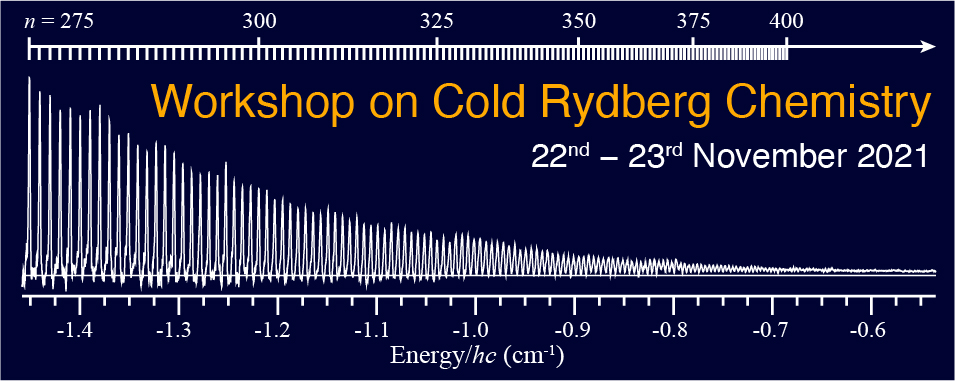From [1] we know that a Rydberg electron can form a molecular type of orbital with a ground state atom nearby. Extended to include several atoms polyatomic Rydberg molecules in many facets [2], including scarring of Rydberg electron densities by classical periodic orbits in a dense (random) gas of atoms [3], we ask here what happens if we increase the number of (ground state) atoms in the...
The creation of ultra-long-range Rydberg molecules in an ultracold dense atomic gas combines aspects of physical chemistry, few- and many-body physics. We use this experimental platform to create different types of Rydberg molecules with striking physical properties. We discuss the photo-association of those molecules, their interaction with the surrounding ground state atoms, their use for...
In this talk, I will present an experimental toolbox for selectively varying the contributions to the binding in long-range Rydberg molecules (LRMs). By studying photoassociation of heteronuclear LRMs in a dual-species MOT of $^{39}$K and $^{133}$Cs atoms, we explore the role of the $p$-wave scattering and hyperfine interaction to the binding energy and stability of LRMs. Millimeter-wave...
In cold and ultracold mixtures of atoms and molecules, Rydberg interactions with surrounding atoms or molecules may, under certain conditions, lead to the formation of special long-range Rydberg molecules [1-3]. These exotic molecules provide an excellent toolkit for manipulation and control of interatomic and atom-molecule interactions, with applications in ultracold chemistry, quantum...
Based on their dispersion coefficients Cote et al. suggested the existence of macrodimers, or double Rydberg molecules. Later Kiffner et al. suggested that bound molecules could be formed between two asymptotic states. The first experimental evidence for bound double Rydberg molecules was presented by Overstreet et al. Saffmanhausen and Deiglmayr, and Hollerith et al provided spectroscopic...

